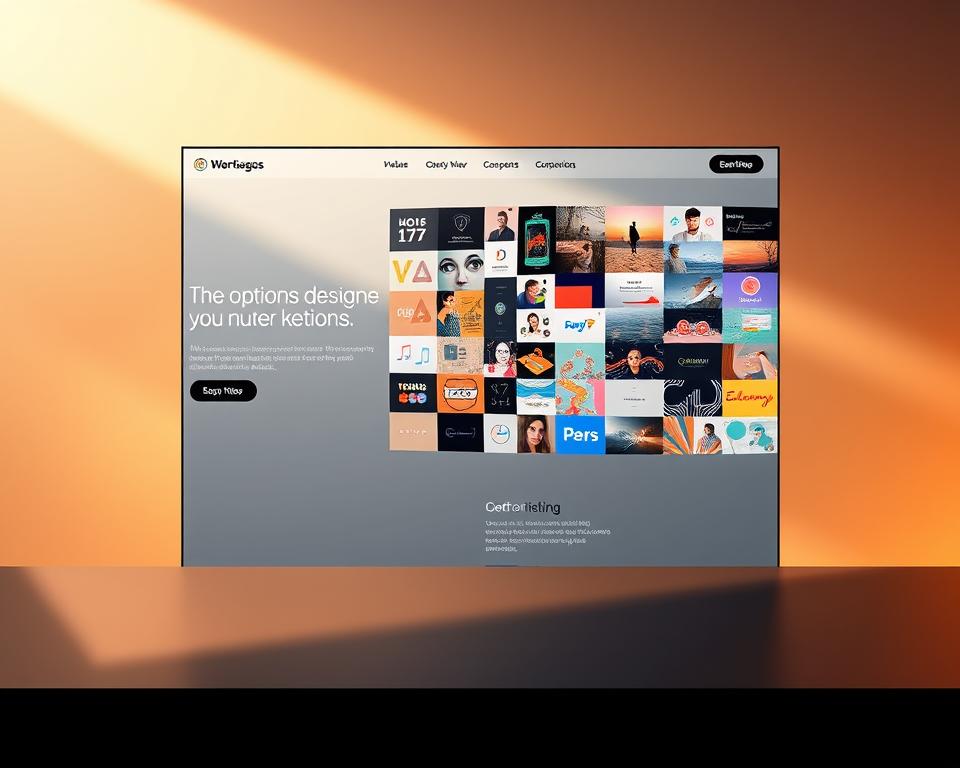Anúncios
What if your next big idea fails because it never met a real customer?
The first step is simple: use an Innovation checklist that ties ideas to clear strategy and business goals. 2025 matters because AI scale-up, stronger governance, and evidence-based funding change how teams win. Many firms fall into innovation theater—big events with no follow-through, as Dr. Rita McGrath warns.
You will read practical guidance framed around people, portfolio, and process. You’ll see examples from Ping An and Bosch that show staged funding and customer evidence can move products and companies from concept to validated growth.
Expect guidance, not promises. This section previews how cross-functional leadership, new P&Ls, and KPIs help your organization fund learning, measure impact, and adapt. Use this checklist to align ideas with strategy, earn legitimacy, and track measurable success.
Introduction: your Innovation checklist for 2025 at a glance
Open with a focused set of actions that make experiments count toward business goals.
Anúncios
Why a practical list matters: Many organizations run events and prizes that create energy but no outcomes. A short, repeatable checklist helps you convert intention into validated progress by forcing tests, customer evidence, and staged funding.
Why a checklist beats “innovation theater” in 2025
Brainstorming and hackathons are useful, but they fail without follow-through. You need a process to test ideas with customers and fund what shows fit.
How this guide uses people, portfolio, and process
This playbook frames work across three pillars: people who earn legitimacy, a portfolio that balances bets, and a process that reduces risk. Governance, staged funding, and clean handoffs support these pillars.
Anúncios
What’s new since last year
AI is moving from pilots to scale. Boards and investors now ask for evidence, not just ambition. That shift changes how you prioritize projects and allocate scarce resources.
- Use sections that match your programs and leadership needs.
- Measure success by staged milestones and validated learning.
- Focus teams and research on outcomes that prove fit before scale.
How to use this guide: Pick the parts most relevant to your company, adapt the steps to your context, and keep measuring progress rigorously.
People first: build legitimacy, relationships, and champions
People determine whether fresh ideas survive or wither inside your company.
Earn idiosyncrasy credits by delivering small, visible results before asking for latitude on bolder projects. Contribute to business outcomes, meet commitments, and build trust. Over time, that credibility gives you permission to deviate from norms.
Map supporters and target champions
Map your organization into resistors, compliers, endorsers, and champions. Aim for 5–15% champions; that small group can create visible pull for projects.
Engage leaders with clear, narrow asks
Use a simple engagement plan: short demos, concise progress notes tied to evidence, and invites to customer sessions. Ask leaders for specific access—customers, data, or legal reviews—rather than vague approval. Make it easy for busy leaders to say yes.
Position with senior access, not inflated status
Remember status ≠ legitimacy. A high title without trust invites slow-walking. Instead, build a cross-functional coalition (finance, legal, sales, operations) to reduce friction during testing and approvals.
- Coach teams to design like they’re right, and test like they’re wrong.
- Celebrate small wins to reinforce success and momentum across the organization.
- Seek CEO-level sponsorship for visibility, but avoid overpromising authority; let consistent, evidence-backed progress grow your legitimacy.
Set strategic guardrails: clarify where to play and what not to pursue
Start by naming where your team will play and, just as important, what it will leave alone.
Use a simple smell test to find vague goals. Ask: if the opposite choice were true, would our strategy still look purposeful? If yes, rewrite the objective so it makes a clear choice about arenas and customers.
Define arenas, customers, and enabling technology. Spell out the market segments and product types you will prioritize. Also list the technologies you will explore and those you will ignore this cycle.
Practical guardrails for leaders
- Replace fuzzy objectives like “make great products” with named customer segments and measurable objectives.
- Document where not to play to protect scarce resources and keep the organization focused.
- Translate high-level strategy into portfolio criteria that tie to business performance and market realities.
- Use three simple tools: a one-page strategy brief, a fit-vs-stretch decision tool, and a research checklist for early discovery.
- Set a lightweight governance cadence to track products and projects against objectives and surface market signals for adjustments.
Examples help. Ping An defined five arenas and five enabling technologies and then aligned resources and objectives accordingly. That kind of clarity keeps teams from scattering effort and helps leadership fund the right bets.
Design your portfolio: balance explore and exploit for 2025 realities
Your portfolio should be a living map that matches risk to resources, not a fixed formula.
Move beyond fixed ratios: reject one-size-fits-all splits like 70/20/10. Match your mix to disruption risk, strategic intent, and available resources. Right-sizing lets you fund the right projects and improve chances of business success.

Three Horizons as your portfolio map
Use H1 for core product development and immediate gains. H2 for adjacent products and new models. H3 covers higher-risk, VC-style bets that may take a decade or more.
Create an innovation funnel, not a tunnel
Build stage gates that force early evidence and clear exit criteria. Stop weak ideas fast and double down on progress that shows customer fit and risk reduction.
Case cue: how Bosch filtered 214 teams
Bosch funded 214 teams for a three-month discovery phase with about €120,000 each. Rigorous filtering and evidence-based gates produced 19 validated businesses. Time-boxed experiments and modest resources improved learning and scaled success.
- Use a portfolio kanban tool to show status and blockers.
- Include leaders regularly to rebalance focus across horizons.
- Keep written rationales for every investment decision.
Process that reduces risk: from ideas to evidence
Turn ideas into measurable learning by running short, repeatable test loops.
Use a clear process that turns assumptions into tests. Start by mapping each idea into testable assumptions. Run short research sprints that produce comparable evidence across projects.
Run Business Design Test Loops: design like you’re right, test like you’re wrong
Apply the Business Design Test Loop: ideate, prototype value and model, assess, test with customers, learn, decide. Prototype quickly and prioritize real customer behavior.
Prioritize do-evidence over say-evidence
Measure clicks, signups, preorders, and usage first. Surveys and interviews help, but behavior is a stronger signal. Record results on a simple scorecard that covers desirability, feasibility, viability, adaptability, and fit.
Stage-gate with incremental funding tied to learning
Fund in stages tied to learning milestones. Release more resources only after teams reduce meaningful risks. Keep leaders close to unblock access to customers, data, and tools while preserving team autonomy.
- Time-box experiments to maintain momentum and reduce waste.
- Standardize programs and processes so teams know the path from pilot to scale.
- Track progress transparently and share lessons to build organizational memory.
Be rigorous and humble: assume you might be wrong and let evidence change your path. This approach reduces risk and speeds business development without false promises.
Market pull beats tech push—except when it doesn’t
When you put customer problems first, your product work becomes less risky and more useful.
Lead with market pull for most product and products bets. LRI’s 7-10 rule shows seven of ten successful innovations came from clear customer need. Use that as a directional check: favor opportunities where willingness to pay or adopt is visible.
Run lightweight customer discovery: interviews, observation, early prototypes, and pre-sales. Turn findings into a simple business hypothesis and staged validation plan.
Practical steps you can use
- Prioritize problems customers name and show behavior for.
- Keep teams small and empirical; run fast cycles to test market, channel, and pricing assumptions.
- Use focus groups, trend tracking, and competitor notes to reduce blind spots about types of demand.
- Reserve technology push for rare windows—patent timing, regulatory shifts, or clear IP edge—and test market signals early.
Tie every feature to a customer job or pain. If market evidence weakens, redeploy resources rather than forcing a launch. This keeps your strategy ethical, pragmatic, and more likely to win.
Governance, handoffs, and funding: make innovation executable
Governance should make it easy for new business models to be tested, not stall them. Create rules that protect early projects with KPIs suited to learning and traction, not mature performance metrics. That lets your teams prove fit before you demand profit margins.
Create space for new business models with fit-for-purpose KPIs
Use learning KPIs—customer trials, retention, and validated assumptions—while tracking impact at the portfolio level. Distinguish learning milestones from revenue or margin metrics so leaders know what success looks like over time.
When handovers work—and when a new P&L is required
Handoffs succeed when a project fits existing channels and performance metrics, like a new product in a current line. If the business model, pricing, or go-to-market differ materially, escalate early and consider a new P&L with executive sponsorship.
Standing committees, venture funds, and cross-functional teams
Stand up a senior committee to review projects, remove blockers, and manage resources. Use an internal venture fund with staged checks tied to evidence and publish criteria upfront.
- Make handoff processes explicit: readiness criteria, documentation, joint transition plans.
- Clarify division vs. corporate roles for technology and cross-company efforts.
- Align leadership incentives to reward committee work and successful transitions.
Your Innovation checklist for 2025
Open with a simple operating list that forces decisions, evidence, and clear handoffs.
People
Confirm senior access and sponsorship. Map supporters and aim for 5–15% champions. Schedule short demos and define how ideas escalate to decision-makers.
Portfolio
Write clear objectives and choices. Map projects across horizons and set funnel stages. Document stop/continue decisions and the rationale for each allocation.
Process
Adopt the Business Design Test Loop and a simple scorecard. Define evidence thresholds and enforce kill/continue criteria so resources move to the strongest work.
Operations & Tools
Run training, rotations, and innovation fairs to build skills and storytelling. Use a tech radar, pipeline visualization, and startup monitoring for external scouting.
Teams, Ideas, Measurement
- Keep teams small and cross-functional; assign owners and time-boxed sprints.
- Source ideas from customer evidence; retire stale ideas and log learnings monthly.
- Align investment caps by horizon; set growth and progress metrics and revisit objectives quarterly.
Conclusion
Make a habit of moving resources to the few projects with real customer evidence, not the many with only promises. Use people, portfolio, and process together so your company turns experiments into real business outcomes.
Treat this checklist as living strategy: review it quarterly, measure impact by stage, and protect learning time for early bets. Leaders who pair evidence-based funding and fit-for-purpose governance close the execution gap and speed growth.
Adapt tools and cadence to your market, seek expert help for complex handoffs or new P&Ls, and document what worked. Start now—make one practical change this week and build progress step by step toward lasting impact.



